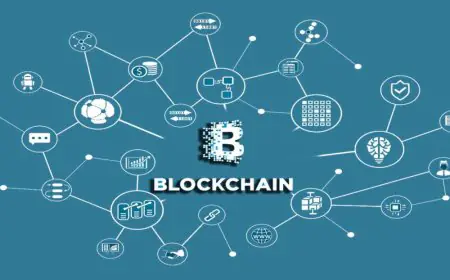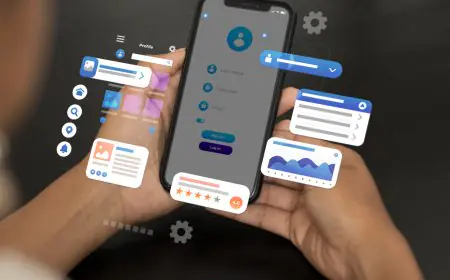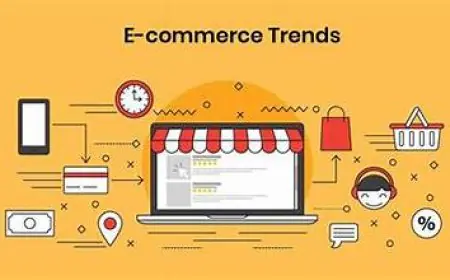Workforce Management for the 21st Century: Helping Deliver a Great CX
With a big assist from AI, these Workforce Management Software solutions are delivering better experiences for customers and employees.

The business environment in the twenty-first century is experiencing fast change, driven by technological breakthroughs and shifting customer expectations. One constant in this volatile market is the crucial role of mobile workforce management in providing a great customer experience.
It is no longer enough to provide appropriate personnel or prompt payroll; today's workforce management comprises a wide variety of responsibilities meant to optimise both employee performance and customer satisfaction.
The modern workforce's composition has altered, creating new levels of complexity in management. Remote workers and freelancers, as well as part-time and full-time employees, are more diverse than ever. While variety is beneficial, it also presents obstacles in communication, scheduling, and skill development. Navigating this hazardous landscape necessitates a well-thought-out plan supported by powerful technological solutions like workforce management software.
The relationship between successful service management software for mobile workforce and excellent customer service becomes more evident as firms increasingly see customer experience as a competitive differentiator. The correct labor management tactics may boost efficiency and production while also improving the quality of client interactions, all of which affect the bottom line.
The Evolution of Workforce Management
From Timesheets to Digital Tools
Initially, workforce management was all about punch cards and paper timesheets. However, technology has transformed the landscape. Now, digital tools offer a variety of options ranging from scheduling to performance tracking. This evolution has not only streamlined operations but also enabled more flexibility in how we work.
The Rise of Remote and Flexible Work
The advent of technology has led to the rise of remote and flexible work structures. While these offer considerable benefits, they also bring new challenges that modern managers must understand and navigate effectively.
Importance of Customer Experience in the 21st Century
The Game-Changer
Customer experience has catapulted to the forefront of business priorities. Companies that excel in this area often enjoy higher customer loyalty and, subsequently, greater profits.
Employee Satisfaction and Customer Experience
Interestingly, satisfied employees often lead to satisfied customers. Employee engagement and a well-managed workforce directly contribute to a positive customer experience.
The Modern Workforce and Its Challenges
The Diverse Modern Workforce
Today’s workforce is more diverse than ever. From freelancers and gig workers to full-time and part-time employees, managing such a varied group requires finesse.
Communication and Scheduling Complexities
Also, effective communication and scheduling have become complex yet essential tasks. Failures in these areas can lead to poor customer experiences, making it vital to address these challenges head-on.
The Role of Technology: Workforce Management Software
Automated Scheduling
Automated scheduling tools can make a world of difference. These tools efficiently allocate staff based on skill levels, availability, and even customer traffic predictions. Consequently, they ensure that your business is well-equipped to meet customer demands.
Performance Analytics
Equally important is the role of performance analytics. These tools provide real-time data that managers can use to optimize individual and team performances. Plus, analytics can reveal patterns and trends that can be harnessed to improve customer experience.
Communication Tools
Let's not underestimate the power of effective communication. With tools that enable instant messaging, video conferencing, and file sharing, teams can collaborate more effectively. As a result, customer service often improves because employees are better informed and coordinated.
Integration Capabilities
Last but not least, the ability to integrate your workforce management tools with existing CRM or HRM systems can be a game-changer. Integration allows for seamless operations and a unified view of both employees and customers, making life easier for everyone involved.
Employee Engagement and Customer Experience
The Power of Engagement
A high level of employee engagement is often indicative of a workforce that's not just content but also motivated to go above and beyond in their duties. And it’s no secret that this positively impacts customer experience.
Boosting Engagement
To elevate employee engagement, consider implementing recognition programs, conducting regular employee surveys, and offering opportunities for professional growth. Doing so not only retains talent but also enhances customer experience.
Workforce Training and Development
Ongoing Learning
A workforce that's trained and up-to-date is more likely to perform well. As a result, invest in continuing training and development programmes.
Micro-Learning and On-the-Job Training
Specifically, consider micro-learning platforms that offer bite-sized lessons which are easier to digest. On-the-job training, too, can be an invaluable resource, especially for new hires.
Agility and Adaptability in Workforce Management
The Need for Speed
Markets and customer demands are perpetually changing. Hence, an agile and adaptable workforce is not just an asset but a necessity.
Strategies for Agility
Cross-training employees and offering flexible work schedules are proven ways to build a more flexible team. Additionally, providing the tools and systems that allow your team to adapt to new challenges is critical.
Legal and Ethical Considerations
Compliance and Fairness
Legal compliance is non-negotiable. From labor laws to scheduling fairness, ensuring that your workforce management strategies are above board is crucial.
Ethics and Company Culture
Treating employees ethically fulfils a moral obligation and positively influences your company culture. In turn, a positive culture impacts customer interactions and enhances their experience.
Data-Driven Decision Making
The Importance of Data
In this age of information, data-driven decisions have become the norm. Utilizing metrics effectively can help you fine-tune your workforce management strategies and by extension, improve customer experience.
Types of Data to Consider
Key performance indicators such as employee efficiency metrics, customer satisfaction scores, and even social media sentiment can offer invaluable insights.
Best Practices for Implementing Workforce Management Software
Identifying Needs
Before diving into a new system, identify your company’s specific needs. Then, look for solutions that directly address these needs.
Monitoring Success
After implementing your chosen solutions, continuous monitoring is key. Utilize performance indicators to gauge success and adapt your strategies as needed.
Final Thoughts
Effective mobile workforce management is intrinsically tied to exceptional customer experience. There are many workforce management tools for call centres and other businesses available for efficient workforce management. With the right strategies and technologies, you can cultivate a workforce that is not only efficient but also instrumental in delighting your customers.
What's Your Reaction?
































































































